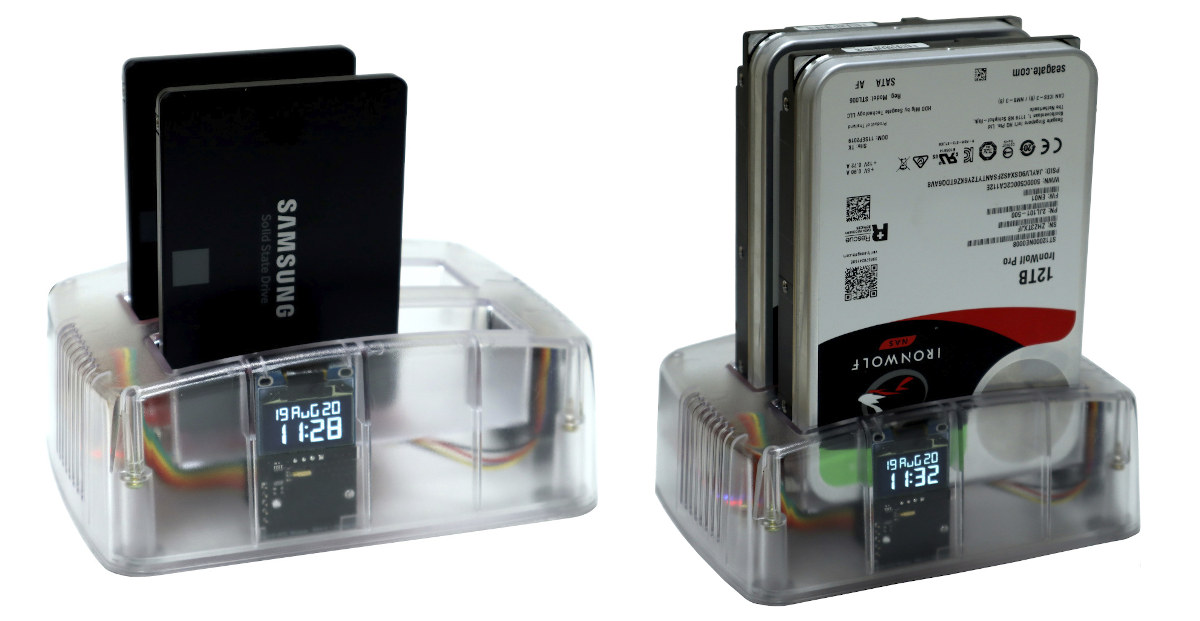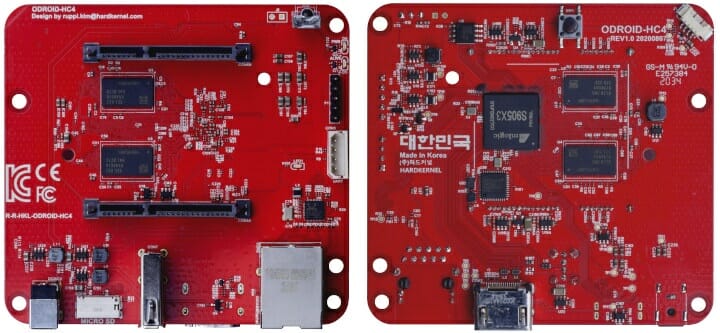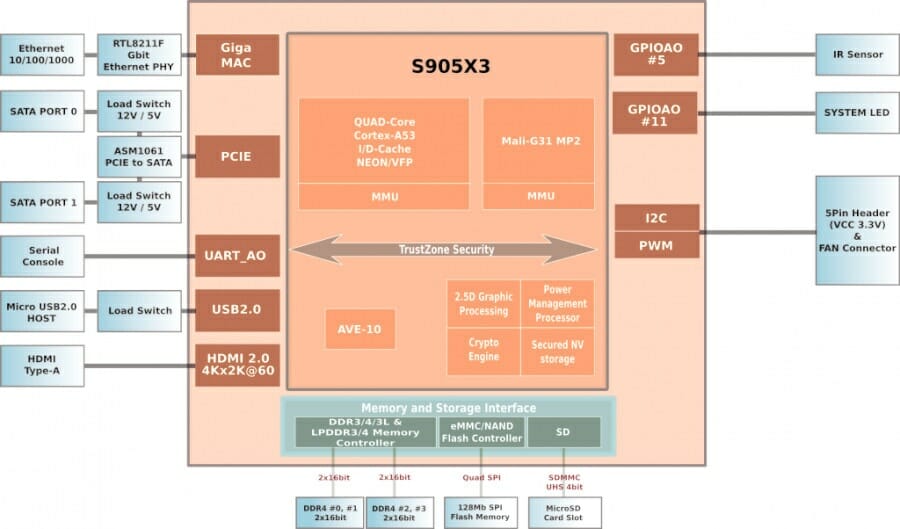[Edit: Hardkernel has now updated their documentation to clarify the NAS uses ASM1061 PCIe to SATA controller instead of JMB582]
It’s hard to find low-cost NAS platforms often because of the mechanism to insert drives and the enclosure add to the cost. An alternative is to use boards like Hardkernel ODROID-HC1 for 2.5-inch drives or ODROID-HC2 for 2.5- and 3.5-inch drives, but each board supports only one drive. The designs are stackable, but you’d need one Linux board per drive, so it’s not ideal.
The Korean company has now launched a new model with ODROID-HC4 powered by an Amlogic S905X3 processor and shipping with a case supporting two 2.5-inch or 3.5-inch SATA drives that will start selling later this month for just $65 and up.

ODROID-HC4 specifications:
- SoC – Amlogic S905X3 quad-core Cortex-A55 processor @ 1.8 GHz with Mali-G31 MP2 GPU
- System Memory – 4GB DDR4
- Storage
- 128 Mbit SPI flash for bootloader like Petitboot
- UHS-1 compatible MicroSD card slot for the operating system
- 2x SATA III ports implemented via
JMB582ASM1061 PCIe to SATA controller
- Networking – Gigabit Ethernet RJ45 port via Realtek RTL8211F PHY
- Video Output – HDMI 2.0 up to 4K UHD @ 60 Hz
- Display – 7-pin header with SPI and I2C for optional 1-inch OLED display + RTC
- USB – 1x USB 2.0 host port
- Debugging – 4-pin UART header for serial console
- Misc – IR receiver, 2x system LED’s, boot switch, fan header
- Power Supply – 15V via power barrel
- Dimensions – 84 x 90.5 x 25.0 mm
- Weight – 280 grams including heatsink, fan and case

The Cortex-A55 cores are pretty efficient, so a somewhat small heatsink (40 x 32 x 10mm) is attached on top of Amlogic S905X3 processor and RAM chips, and it will be good enough for cooling as the company measured a CPU temperature of 60°C under load in a room with an ambient temperature of 30°C. Power consumption is also pretty low at 0.29W in suspend mode, 4W at idle (no drive), and up to 15.6 Watts using hard drives and file transfers over SAMBA.
Besides the ability to connect two drives, the company replaced the USB 3.0 to SATA chip used in previous designs with a PCIe to SATA controller that should deliver better performance, especially for smaller files and random I/Os. Hardkernel reports around 400MB/s transfer speed with iozone using SSD’s, and 110MB/s SAMBA transfer speed that the maximal you can expect from a Gigabit Ethernet link.
The company provides an Ubuntu 20.04 image with Linux 4.9.230 (or Linux 5.8+ mainline) for the NAS and third-party images (CoreELEC, OMV and Android) are coming as well. Petitboot will also be supported and capable of booting the OS from MicroSD card or SATA storage. More technical details can be found in the wiki.
ODROID-HC4 will launch on October 27 for $65 with the plastic enclosure, and $75 with the RTC and OLED add-on board. Note you’ll also need a 15V/4A power supply, and the company will also offer optional accessories including an IR remote control, Wi-Fi and Bluetooth adapters, ODROID-VU series display devices, and a USB-UART cable for OS developers.
[Update: Ameridroid is already taking pre-orders, and as usual you can use coupons to get small discounts on any products on Ameridroid:
- CNXSFWSUPPORTER2 – $2 off orders of $20 or more
- CNXSUPP6 – $6 off orders of $100 or more
]
Thanks to Matt for the tip.

Jean-Luc started CNX Software in 2010 as a part-time endeavor, before quitting his job as a software engineering manager, and starting to write daily news, and reviews full time later in 2011.
Support CNX Software! Donate via cryptocurrencies, become a Patron on Patreon, or purchase goods on Amazon or Aliexpress





